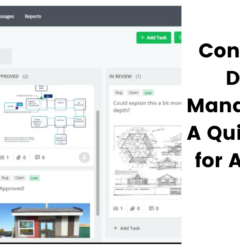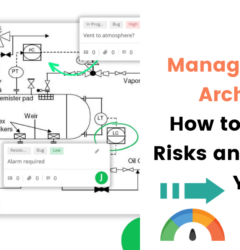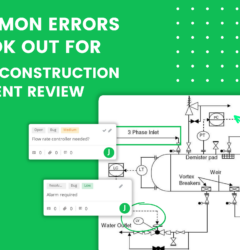Optimizing Your Pre-construction Planning Phase to Improve Efficiency
04 Aug
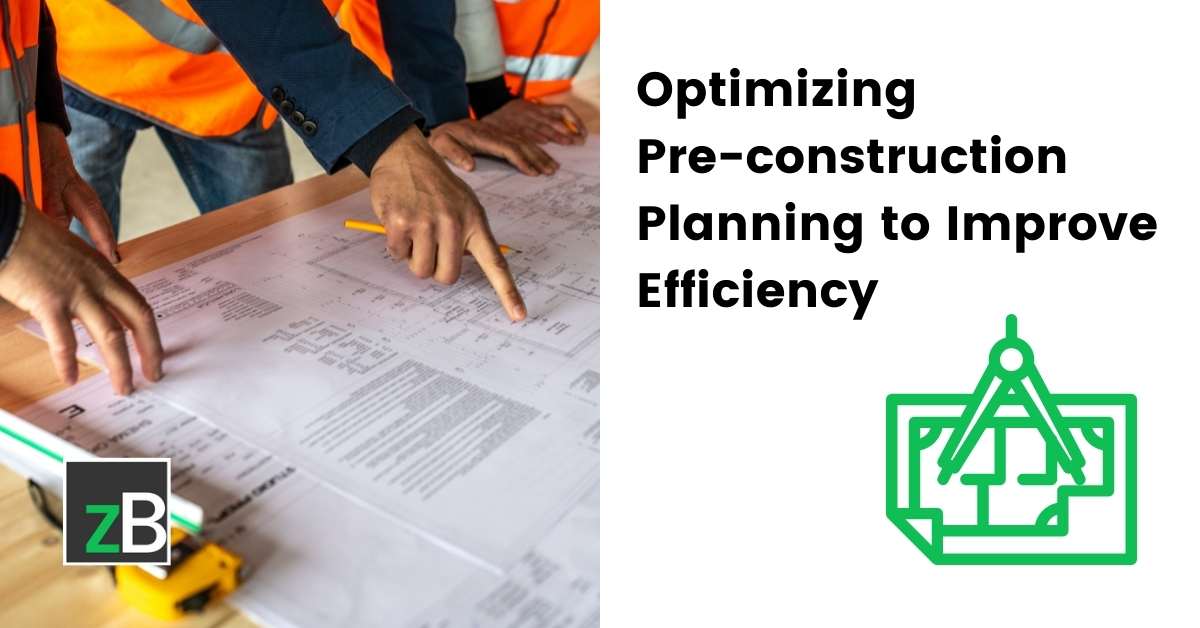
Table of Contents
ToggleA project that goes over budget and behind schedule is a nightmare, making us realise the true importance of the pre-construction planning phase.
Just look at one of the biggest construction overrun disasters in modern history. Many in the industry know about the British Library construction delay. Colin St John Wilson famously referred to the building as “30 years of war”. The first scheme he came up with in the 1960s was scrapped. Undeterred, he drew up a new scheme in 1977. The project was plagued with mistakes, delays, overruns, constant changes to the design, and technical difficulties. In 1997, the library had cost more than £500m, more than three times what was originally estimated. Although some love it, many critics find it deeply unappealing. Prince Charles once famously compared it to a secret police academy.
But, unlike the British Library, you can’t make up your losses through the taxpayers. Overruns and delays will ultimately affect your bottom line. This is where pre-construction planning comes in.
What Is Pre-construction Planning?
Usually, the success of a project is determined before construction begins. Pre-construction planning is of great value to companies as it can help them estimate how much they’ll make on a project. This helps you identify opportunities that may affect your margins and provide a clear roadmap for your client’s projects.
As the earliest phase of construction, pre-construction planning allows the client, contractor, project manager, engineers and architects to work together in planning out all the details of the project. Such as the overall construction schedule, scope, and cost of the construction. There are a lot of different factors that need to be addressed, such as design decisions, engineering evaluations, permits, building materials and construction submittals, environmental studies to accommodate and scheduling obstacles.
A typical pre-construction planning phase usually involves the following steps: defining the project and looking for potential issues, scheduling milestones, determining scope, estimating costs and manpower, and specifying requirements.
Some steps are not always required in the planning process, but these steps are vital:
- Project scope: This can assist your construction project by breaking down the scope into as much detail as you require, clearly outlining what tasks are needed, how long these tasks will take and how they will get there.
- Budget: Before proceeding with your desired project, you’ll need to establish an initial budget so that you can accurately gauge the cost of the construction. After this, you’ll be able to determine whether or not it’s viable. When creating an appropriate plan, it’s important to include details of how it was chosen, what it reflects and what comparable costs may be.
- Schedule: A project schedule needs to be set and followed to keep track of the pace. How long will it take to complete it? Will it stay on time and if not, what kind of delay might there be?
Pre-construction planning can have many positive impacts, such as improved efficiency, saving time and energy, more effective communications and more profit. Now let’s dive into some of the major benefits of the pre-construction planning phase.
What are the benefits of pre-construction planning?
We know that a successful construction project starts with a thoughtful plan and clear, concise communication from the very beginning. By planning early in the process with your team and getting a solid foundation set during pre-construction, you can better avoid problems down the road. Planning can help you and your team stay efficient during the construction phase of your project, minimizing your cost overruns, project delays and unnecessary friction in the future.
Let’s set all these pre-construction planning talks into motion. To summarise, our five steps to help you optimize your preconstruction process are:
Establish Clear Communication Channel From the Beginning to Improve Productivity
The pre-construction planning team must reach an agreement with the firms involved on defined objectives for the project’s design and realistic delivery targets. A problem may be resolved swiftly by the person in charge thanks to open lines of communication and real-time collaborative technologies.
Effective pre-construction planning requires cooperation and open communication. With the aid of cloud-based construction review technologies, all project participants may quickly and easily access project data at any time, anywhere.
The correct tool will guarantee that everyone is always in sync. This increases teamwork and communication. It guarantees that everyone in the team can meet deadlines throughout the whole building process.
It’s not just accuracy and efficiency that can be improved with the right software. Also, it allows teams to make the most of their skills and expertise throughout the project.
Develop Performance Metrics & Measurements
Your employees will respond well to performance evaluations, especially if there are incentives involved.
Establish precise performance standards and think about rewarding them(even financially) for each one they meet.
Additionally, it will facilitate team collaboration, which will increase efficiency even further.
You may specify a range of performance measures, such as being at the job site on time, being nice to coworkers and clients, finishing work promptly, taking the initiative to address problems, and overall work quality.
Let them know how much time they must spend on each stage of the project, and devise strategies for them to constantly utilize these measurements against themselves while working with their team. This motivates individuals to finish tasks more quickly than anticipated since they do more in less time than management had anticipated.
It is more crucial to measure the proper things than anything else.
What kinds of metrics should you focus on? Try focusing on key areas that’ll affect the timeline and overruns.
For eg: With a submittal review tool, you can check the dependencies of each review along with their deadlines; making sure you’re always on track and within the time limit.
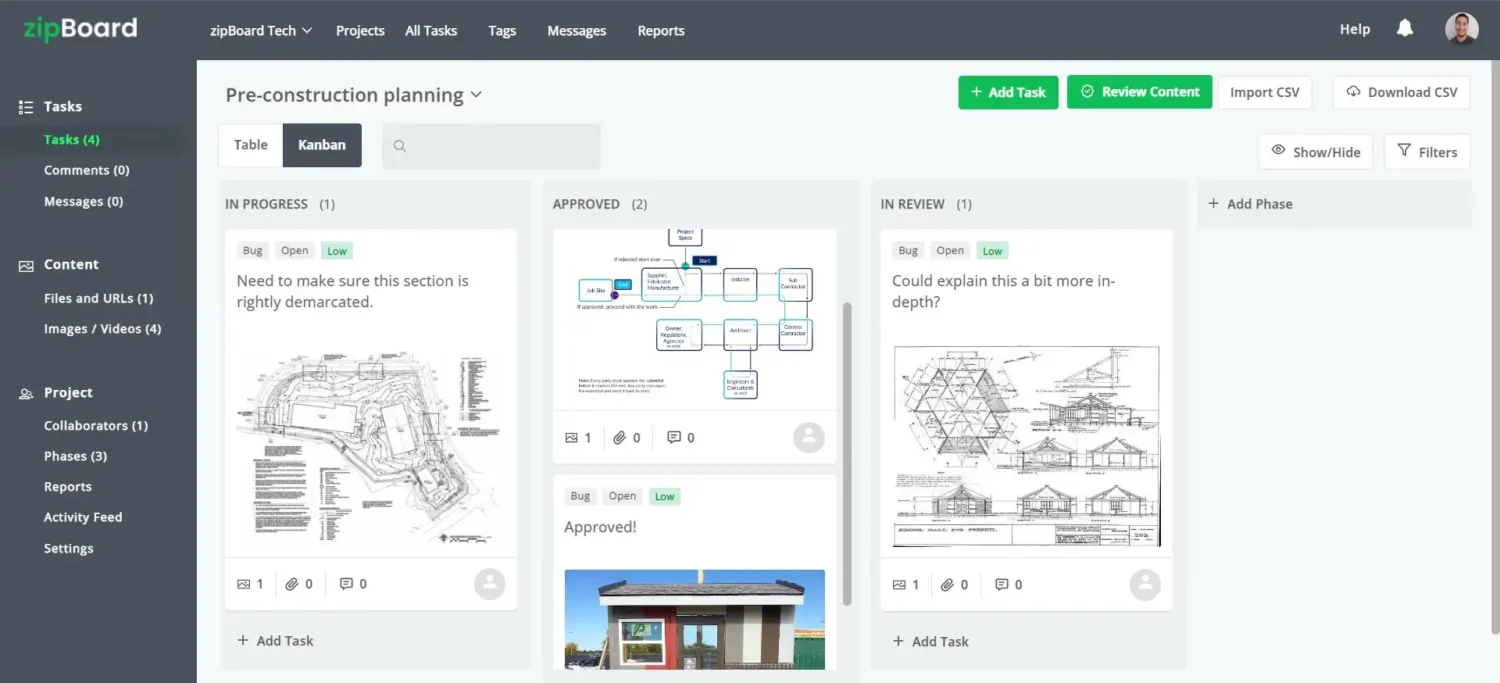
Build a Project Cycle That Includes Third Parties and Subcontractors
More often than not, there is always involvement of external stakeholders such as subcontractors, consultants, and even clients themselves. Now imagine having to get feedback from these dependencies on multiple documents when you’re working on a tight 2-week window schedule.
Without a pre-built submittal review process, this is task is near impossible at scale unless you have someone on standby for this sole purpose. The key is to get asynchronous feedback from them, remotely and have all of their reviews centralized on your review tool.
Say, you have a specific document, and you want the client’s feedback on it without having to create a separate account on your tool for them. A construction submittal review tool should allow you to do just this. You can then add the comments as tasks if needed from within the tool.
Note: Clients can come from a non-technical background so we’ve noticed that this is often the necessity to help them with their usage.
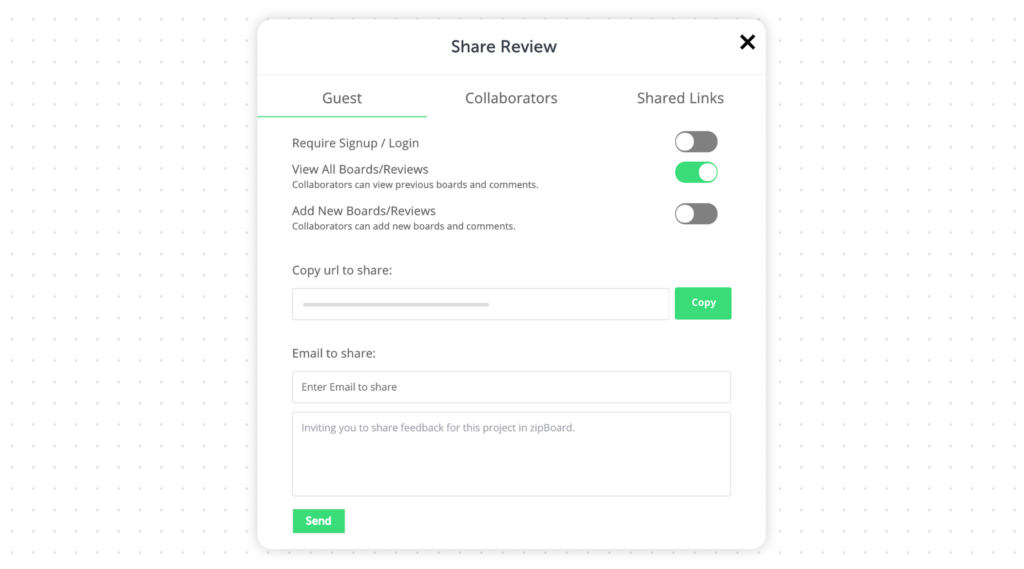
Contractors can implement the appropriate procedures and software at an early stage of the project’s lifetime thanks to pre-construction planning. By doing this, the entire construction process is optimized before it even begins.
Effective communication starts with getting in touch with the appropriate people at the right time and continues with steady communication on the changes that projects eventually undergo. Trust is developed when you focus on the connections that matter most. You can build that with the aid of a well-planned project cycle.
Webinar
Streamline Your Construction Review Process
Have a well-defined review/approval process that facilitates better feedback, speeds up turnaround time by 50%, and results in greater end quality.
Check Free WebinarIdentify Project Roles Clearly and Use the Task Management Tool
Working with clients from multiple industries, one thing we’ve noticed at zipBoard is the importance of clear designation of roles and access control. Especially with construction teams, this becomes paramount to the success of the entire project.
Here’s what a proper designation of roles looks like at zipBoard. Users can add managers/privileges as needed.
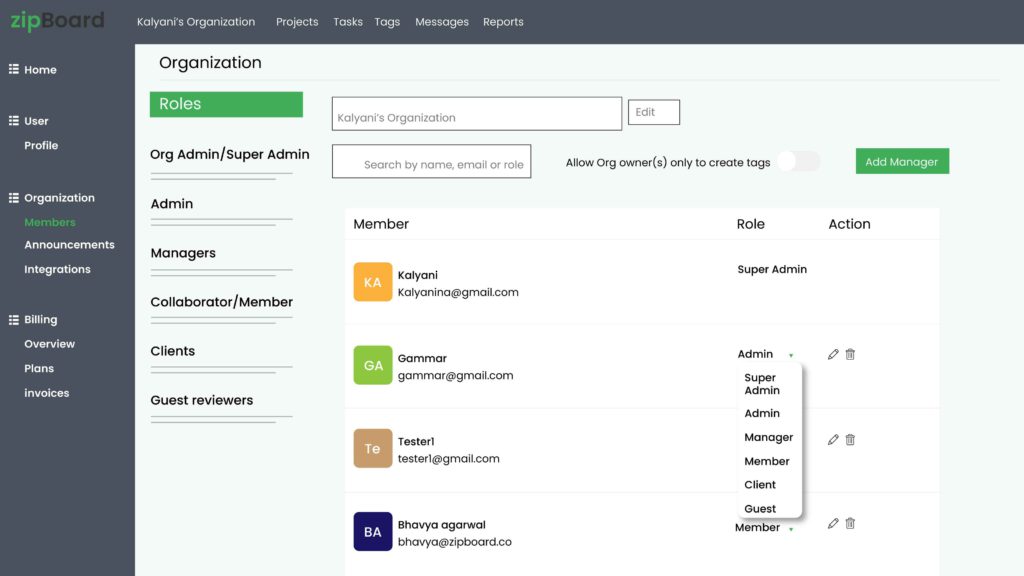
Establish clear roles and responsibilities for each dependency (sub-contractor, manager, architect, etc.) in the pre-construction planning phase itself to avoid inconsistencies in the latter stages of the project. This reduces the cost of error incurred and in turn saves you the cost of rework.
Did you know that the average cost of error is around 25% on most projects?
Source: Get It Right Initiative(GIRI)
And the average cost of error can go up to 9.3%.
Source: Navigant Construction Forum
Construction businesses today require solutions that enable efficient task management between different departments and do away with silos inside offices. Successful collaboration, after all, improves connections both inside and outside the team.
Getting all project stakeholders on the same page from the start is one of the greatest methods to ensure the success of a construction project. This means choosing the right digital platforms for collaboration across the various teams and dependencies throughout the entire pre-construction planning and submittal review phase.
While some construction professionals hear the word “automation” and worry about potential layoffs, highly efficient construction organizations know that automation is not a replacement for people; it is simply a tool to increase efficiency and reduce errors.
The right tool ensures the entire construction team stays on track.
Improve Client Satisfaction While Building Trust
Thorough pre-construction planning translates into higher client satisfaction. Your efforts put into the pre-construction phase will result in a reduction of cost overruns and delays all while exceeding your clients’ expectations.
And when you involve the clients in meaningful discussions throughout the different touchpoints of the pre-construction phase, you’re adding extra value for yourself.
There are many processes and stakeholders involved in the pre-construction phase of any construction project. However, it helps businesses set achievable client expectations, identify cost savings, and mitigate issues before they occur, increasing productivity and profitability.
Is pre-construction worth the effort? Smiling clients who come back again say yes.
Strategies to improve the construction submittal process
Whether you’re just starting or experienced, find 9 actionable strategies you can implement today to improve the construction submittal process.
Check ArticleDocument Markup Tool for Pre-construction Planning
The global demand for document markup tools is ever expanding, with an increase in the adoption of automation in software development and an increase in investment in testing processes.
The easy-to-use document annotation and review systems make it easier for teams to adopt these solutions without requiring additional staff to install or manage the software, leading to reduced cost and quicker delivery of digital modules.
A document markup tool for construction, like zipBoard, is what you’ll need to review submittals and documents in your pre-construction planning phase. With it, you can collaborate on your documents seamlessly with different stakeholders on a single platform. Pinpoint exactly where you want the edit to be made and add your stamp of approval once reviewed.
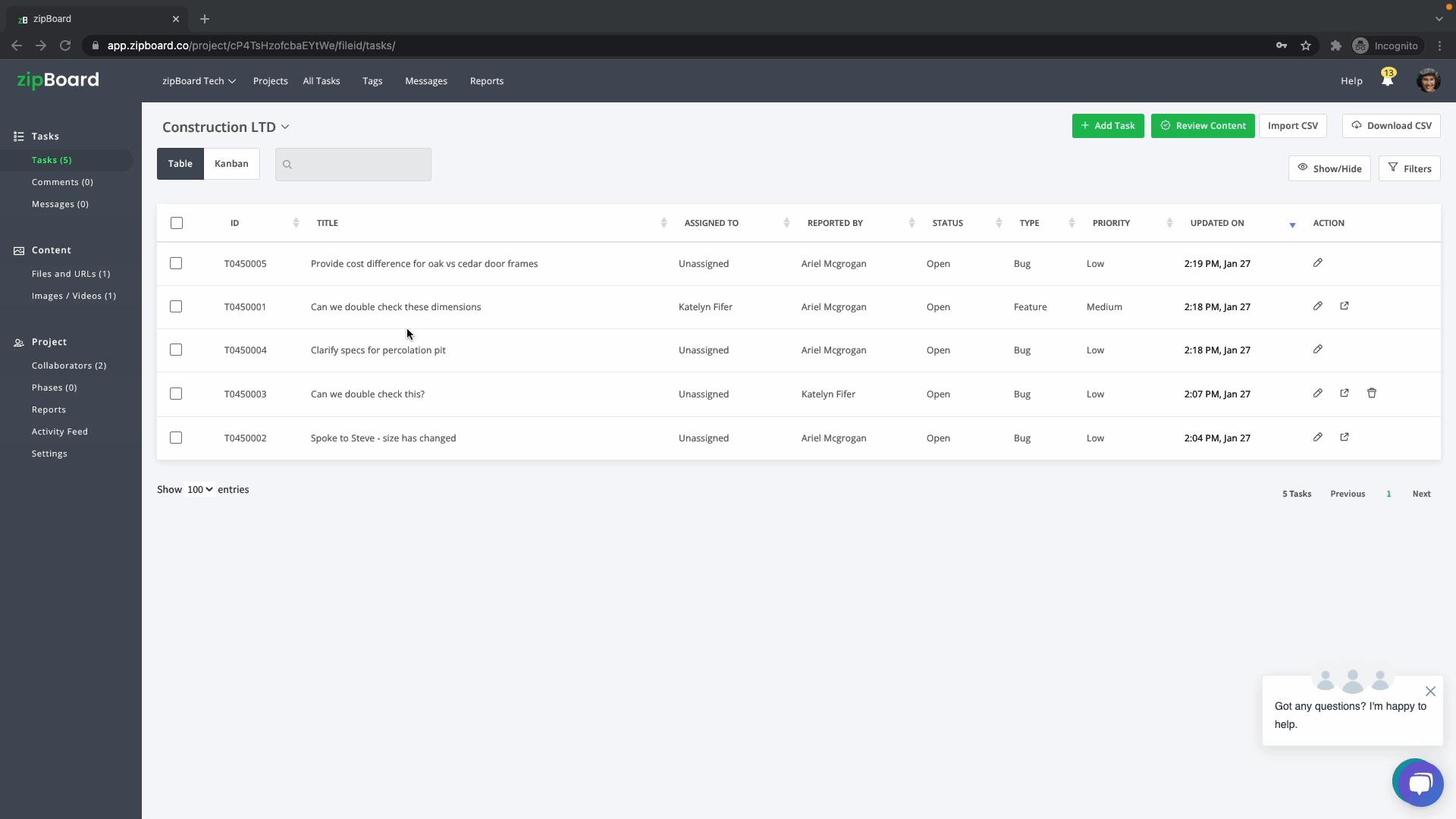
Apart from the 5 reasons we just discussed earlier, here are 8 more reasons why you should adopt a visual review tool for your pre-construction phase:
- Save setup costs.
- Faster delivery cycles.
- Stakeholder feedback is centralized.
- PDF and document reviews are simplified.
- Better collaboration for remote teams.
- All project backlogs and discussions are accessible to everyone from anywhere.
- End unnecessary phone calls and screen-share meetings.
- Seamless transition to the submittal review process with the same tool.
Takeaway
Identifying major risks and concerns before construction begins is an opportunity to improve quality and increase profits. The right tools, however, are crucial for eliminating all disconnects between planning and execution. The use of PDF annotation and review technology, such as zipBoard, allows pre-construction teams to plan, develop, and collaborate with the builders and vendors for their projects.
Streamline your document approval workflows and connect all your data from design to build and make more effective decisions across the project lifecycle.
Improve Pre-Construction Planning With Document Markup Tools
Start your free trial or book a demo today so that we can create a tailored solution for you.
Book DemoStart Free TrialAuthor’s bio:
Gaurav is a SaaS Marketer at zipBoard. While earning his degree in CSE at KIIT, Bhubaneswar, he rediscovered his inner love for creativity as he got into his first social internship. If he isn’t busy working, you can find him around his friends/family or enjoying a good football match or a passionate discussion over it, whichever works.
Recent Posts
- Technical Document Review Process: How to Improve the Feedback Process for Faster Project Completion October 21, 2024
- The Ultimate Website QA Checklist and Guide (Free Excel Template Included) October 7, 2024
- Transforming Project Management: The Power of AI-Powered and Custom Task Types October 1, 2024
- Meet Radman Tavakoli, zipBoard’s Full-Stack Developer Co-Op (August 2024) September 19, 2024
- Construction RFI Management: How Many is Too Many? September 17, 2024
©️ Copyright 2023 zipBoard Tech. All rights reserved.
